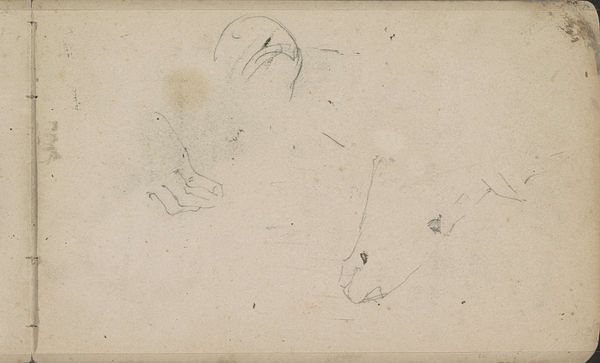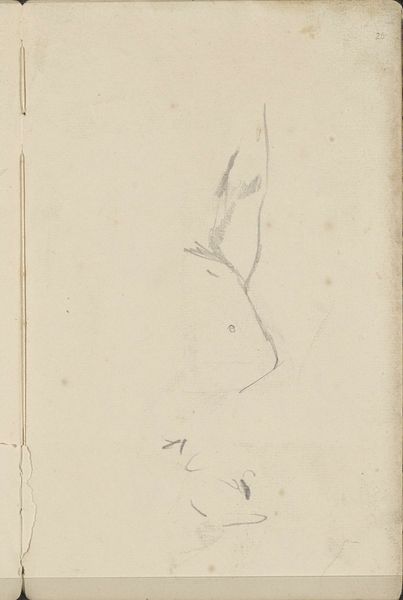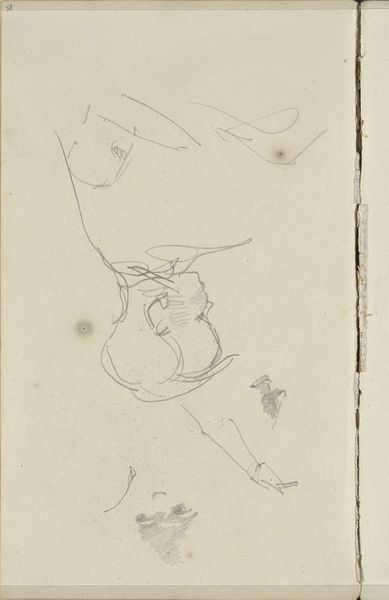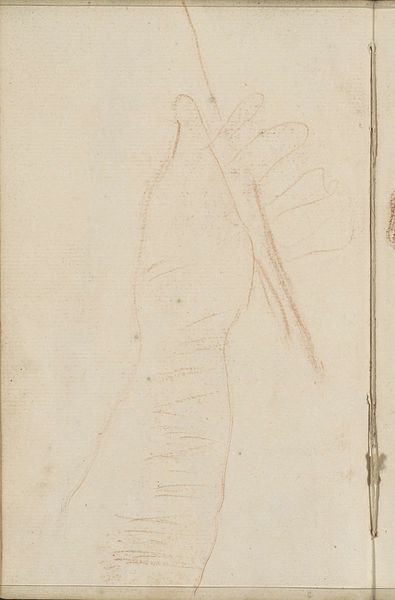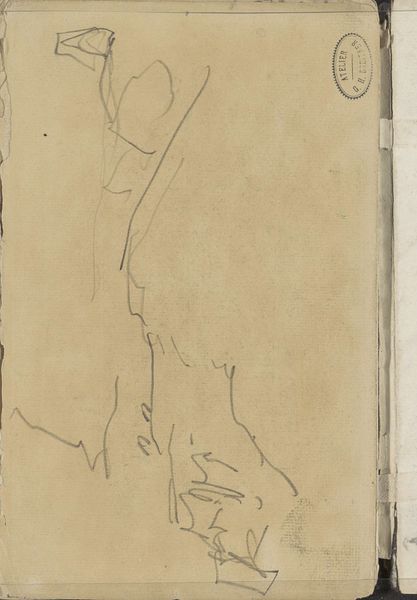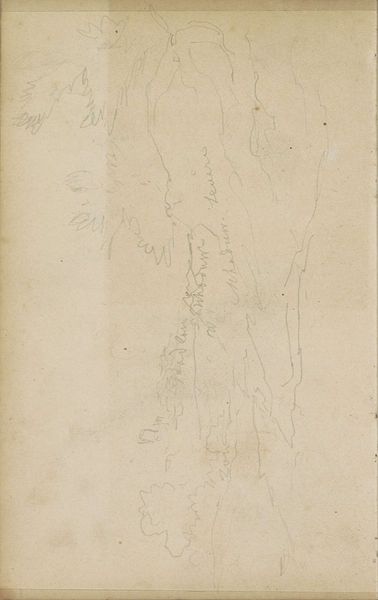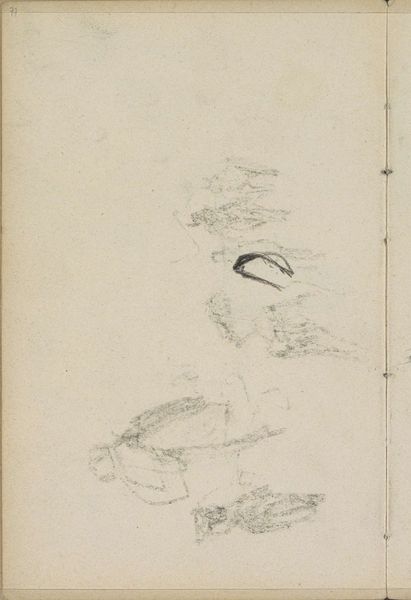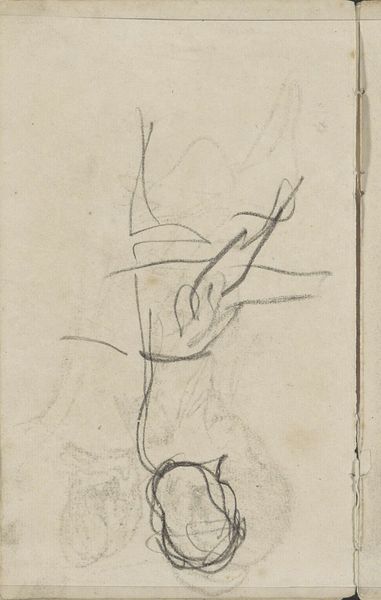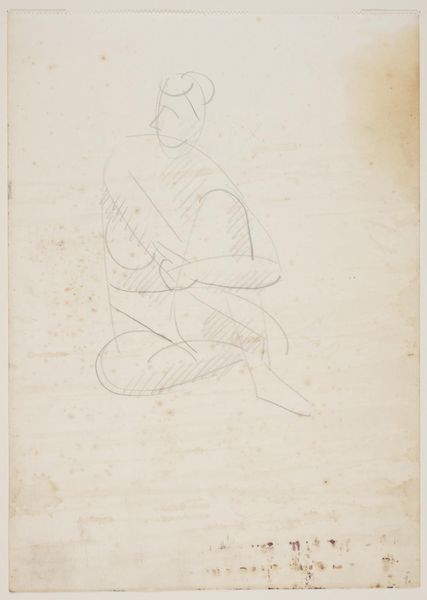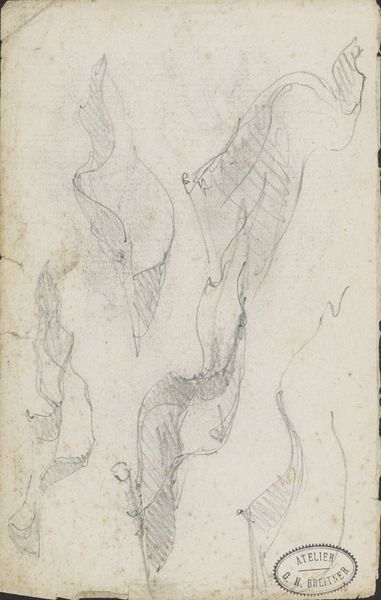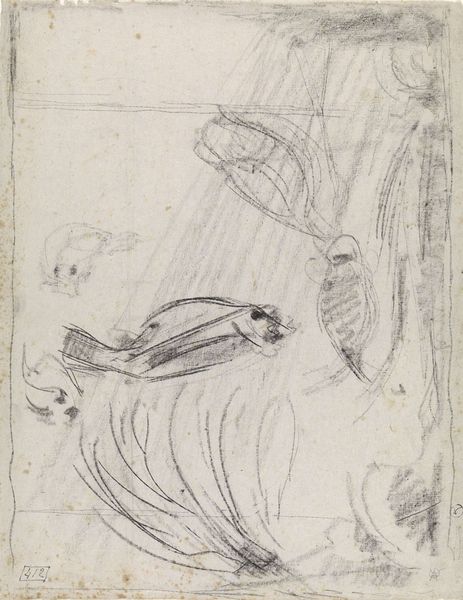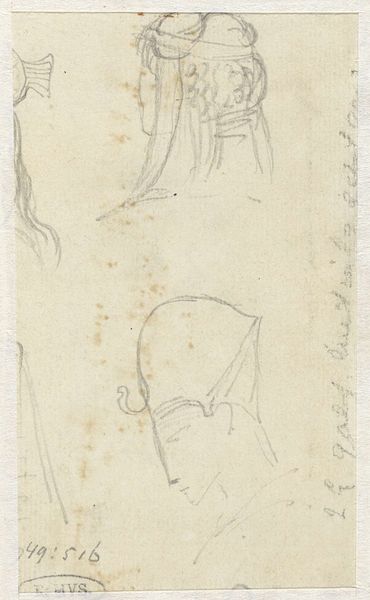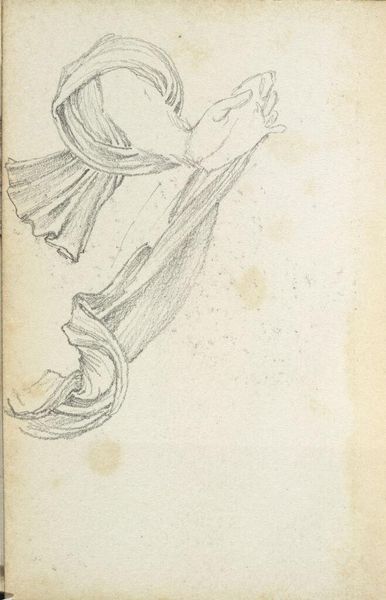
drawing, paper, pencil
#
pencil drawn
#
drawing
#
paper
#
pencil
#
pencil work
#
realism
Copyright: Rijks Museum: Open Domain
Curator: This artwork, titled "Studie," comes to us from Petrus Johannes van Reysschoot and is estimated to have been created between 1710 and 1772. The artist utilized pencil on paper, rendering what appears to be an evocative sketch. What are your first impressions? Editor: Ethereal and indistinct, almost ghostly. I notice the lines are tentative, exploratory, suggesting an early stage in the creative process. I am really drawn to the texture of the paper; you can almost feel the tooth of it under the pencil. Curator: Absolutely, and considering the era, we have to acknowledge the labor involved in producing both the paper and the pencil. Beyond its literal representation, I see this piece as a lens through which we can explore 18th-century artistic practice. Van Reysschoot would have been working within established power structures that dictated access to resources, patronage, and, of course, artistic training itself. What might seem like a simple drawing is actually tied to a complex web of social and economic conditions. Editor: I agree. And what looks like a study of a drinking vessel is more compelling because it also displays the material conditions that helped create it. It seems such an economic use of line, implying form rather than defining it. Were drawings like these intended for future use in a finished work or considered complete on their own merit? Curator: It is hard to say definitively without more context, but sketchbooks were used as crucial tools to hone one's skills and document visual concepts. Some artists from marginalized backgrounds found drawing provided a more accessible entry point into the art world. As a preliminary study, it showcases not just skill, but hints at the possible inequalities that impacted artistic careers. Editor: Looking at this, I am also thinking about how such humble material could eventually be consumed and perhaps even traded for enormous sums in the art market. Curator: Exactly. Even these lines, made of graphite, embody a journey that has political meaning: the extraction, refining, and transformation, a supply chain connecting the past with our present. Editor: For me, this close analysis has turned something modest into something magnificent. It highlights the story that careful mark-making has both aesthetic and socio-political implications. Curator: And for me, thinking about the broader social forces in play makes the act of drawing even more remarkable. Art always carries within it traces of labor, history, and power, whether obvious or hidden.
Comments
No comments
Be the first to comment and join the conversation on the ultimate creative platform.

